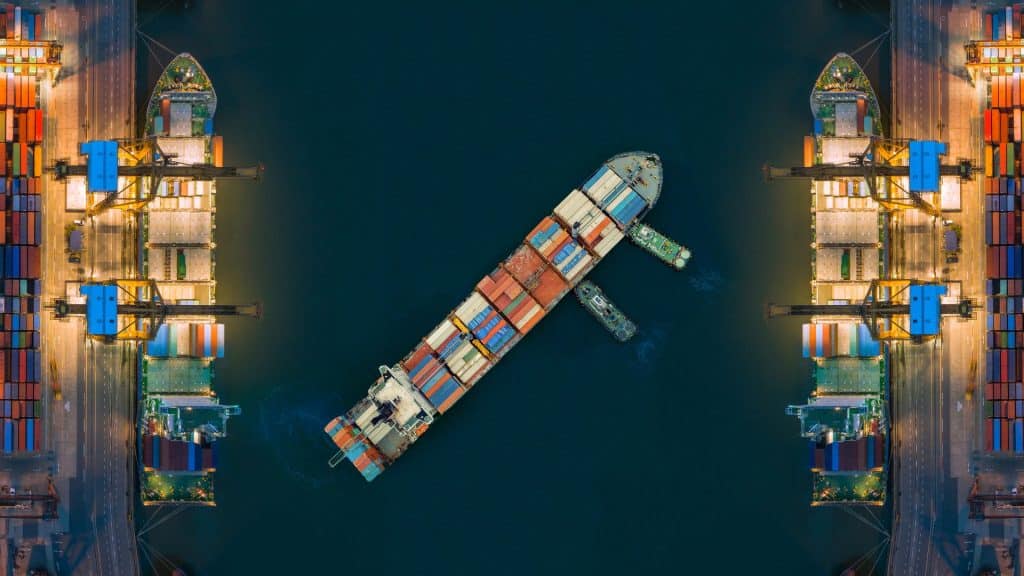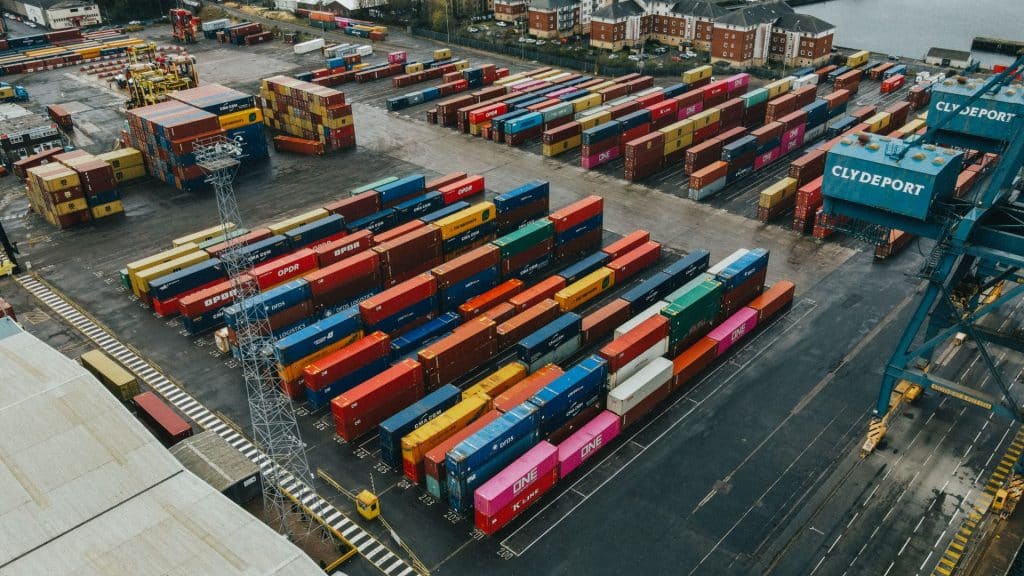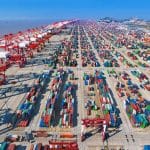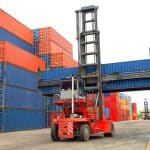GPA-SPONSORED TRANSLOAD FACILITY OPENS IN SAVANNAH
NFI Industries has opened a transloading facility adjacent to the Garden City Terminal at the Port of Savannah which, while not the first such location near the port, is unique because it does not require drayage drivers or chassis and will be dual served by the Georgia Ports Authority (GPA).Instead of a chassis, a piece of equipment called a “bomb cart” will be used to move containers. A bomb cart looks similar to a chassis but is used within terminals to unload ships or trains and shuttle cargo to container stacks.

LARGEST US PORTS RECORD 20%-PLUS DECLINES IN TRANS-PACIFIC IMPORTS
The largest ports on the East and West coasts recorded 20%-plus year-over-year declines in US imports from Asia in the first eight months of 2023, while Gulf Coast imports dropped only 3.7% during that period. As a result, the combined market share of the four busiest US ports for trans-Pacific imports shrank 2.7 percentage points. Total containerized US imports from Asia tumbled 21% year over year through August, Compared with the same period in pre-pandemic 2019, however, volumes were essentially flat.
PORT OF LOS ANGELES MARKS RETURN TO CARGO VOLUME GROWTH
The Port of Los Angeles saw a 3% increase in cargo volumes in August compared to the same period last year, marking the port’s first monthly year-over-year increase in 13 months. Loaded imports increased by 7% and loaded exports increased by 22%, while empty containers declined by 10%.The Port of Los Angeles’ August performance compares to the more than 15% YoY decline in total cargo volumes next door at the Port of Long Beach. You may recall, last year the Port of Los Angeles started to feel the pinch of shrinking import volumes in August, a few months earlier than the Port of Long Beach, which reported similar volumes in August 2022 than it did in August 2021—thanks largely to an increase in empty containers being shipped overseas.
RISING FUEL COSTS DRIVING US LTL, TRUCKLOAD COSTS HIGHER
A 20% increase in the price of diesel fuel at the pump over the past three months is putting pressure on US trucking costs, and shippers can expect to see their transportation costs creep higher this fall amid seasonal freight demand and a forecast for higher fuel prices and surcharges. The impact is being felt by trucking companies and their customers, who are already paying higher fuel surcharges. “Rising fuel prices affect different carriers in different ways”.

INTERMODAL PROVIDERS UNCERTAIN WHETHER RAILROADS ARE PREPARED FOR VOLUME REBOUND
Intermodal providers are split on whether North American Class I railroads have made any structural changes in the way they operate to prepare for the next surge in cargo and avoid repeating some of the mistakes they made during the pandemic that resulted in dismal service at times. Many logistics providers say railroads cut expenses too much to please shareholders in recent years, but ultimately made their networks less nimble to react to a surge in freight. Railroads also began to run fewer — and longer — trains without necessarily having the appropriate infrastructure inside their terminals to handle those loads.




